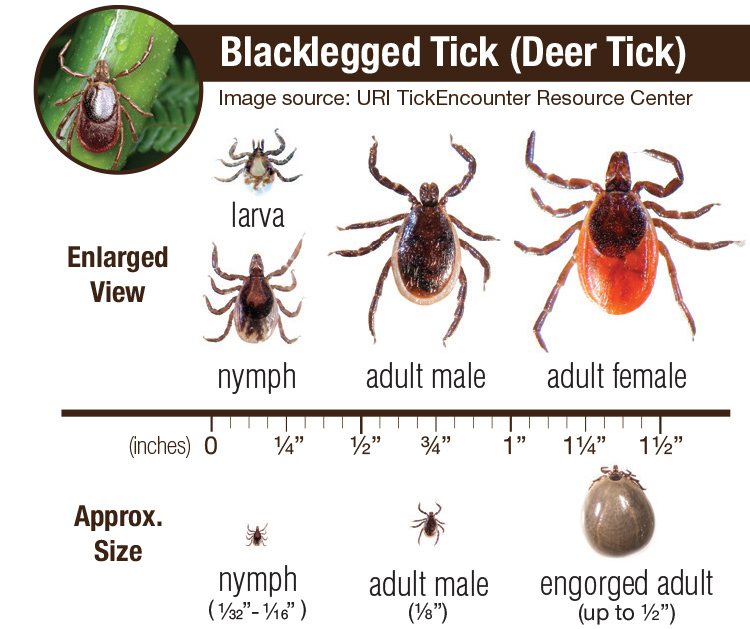Puslinch Considered “High-Risk Area” For Lyme Disease Ticks
Information provided via wdgpublichealth.ca, Click here to see full article.
Lyme disease is a serious illness caused by bacteria that are spread through the bite of an infected blacklegged tick (also known as a deer tick). If you think you have been bitten by a tick and are concerned, contact your healthcare provider. If possible, keep the tick, take a photo and submit it to [email protected] or eTick for identification.
Ticks are usually found in woody or bushy areas but because they can be carried by birds it is possible to encounter them just about anywhere. Ticks do not jump, fly or move very quickly, but will wait on low-growing vegetation and easily latch onto people and pets that brush against them.
It is possible to find an infected tick almost anywhere in Ontario. The southern part of Wellington County (Puslinch) has been identified by active surveillance (tick dragging) as a high-risk area.
A tick must be actively feeding to spread bacteria, including the bacteria that cause Lyme disease. Lyme disease may be prevented through the use of antibiotics if detected soon enough. Contact your healthcare provider if you are concerned.
This map (PDF) shows risk areas where blacklegged ticks are established.
How to prevent ticks bites and Lyme disease
- Download our Tick ID card (PDF, 2 pages, 288 KB) to carry with you
- Wear light-coloured clothing so ticks are easy to see
- Cover up by wearing closed footwear and tucking pants into socks
- Use a repellent that contains DEET or Icaridin and follow the manufacturer’s directions
- Perform full-body checks on yourself, children and pets (if you find a tick on your pet, visit the Pet Tick Tracker)
- When you get home, put your clothes in the dryer for at least 10 minutes before washing them
- Find out how Lyme disease is identified and treated
What to do if you find a tick attached to your skin
If you’ve been bitten by a tick, remove it carefully using tweezers following these instructions or a tick remover. Remove it as soon as possible. Removing ticks within 24 hours reduces the risk of infection. Submit the tick to [email protected] or eTick for identification.
Never:
- Flick or scratch an attached tick
- Use petroleum jelly, heat or nail polish to remove a tick (these take too long to work)
- Remove a tick while holding it around the middle (abdomen)
- Burn an attached tick
These methods increase the chance of forcing harmful microorganisms out of the tick and into your bloodstream.
More information from a recent article on guelphtoday:
via guelphtoday.caU of G expert says Puslinch is an area of monitoring for ticks and increased hiking during quarantine could be putting people in contact with them more often
Many Puslinch residents are reporting more ticks this season in a region WDG Public Health calls a “high-risk area” for lyme disease carrying blacklegged ticks.
On Facebook group What’s Happening Puslinch, a woman said she found ticks on herself, children and many on her dogs. Dozens of comments poured in with other Puslinch residents reporting the same with some identifying them as blacklegged ticks, which are better known as deer ticks.
[click here to continue reading the full story on guelphtoday.ca]

